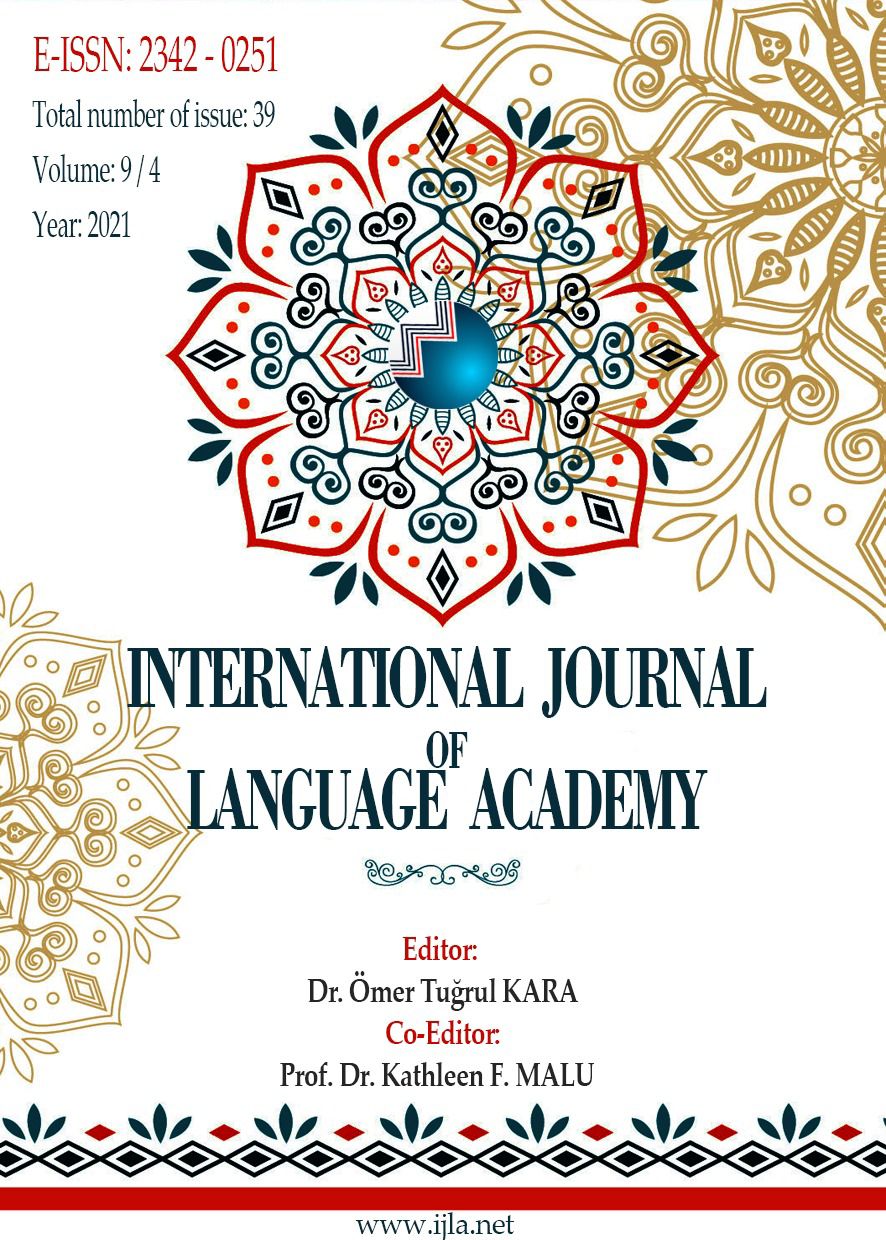Author :
Abstract
Keywords
Abstract
There has been a growing interest in language and literacy skills transfer; specifically, the amount, the conditions, and the contexts of such a transfer are under question in the transfer of the native language reading skills and those of the target language. In this descriptive study, we aim at investigating whether there is a relationship between the L1 and L2 cognitive academic language proficiency (CALP) of the graduate students whose medium of instruction is English. For this reason, we adapted the questionnaire prepared by Hellekjaer (2009) for Norwegian students. The participants were asked to self-assess themselves quantitatively. Firstly, the findings have indicated that the good reader in L1 is also a good reader in L2. So there is a positive transfer from L1 CALP into L2 CALP. The second finding is that reading texts in their field eases the comprehension of the texts since they use the context knowledge. The participants also seem to be transferring their L1 reading habits into L2 reading. For the poor readers, the lack of reading practices in their previous education life may be the reason for not being able to develop reading strategies. The results may shed light to enhance the reading skills of the English language learners, especially for academic purposes.
Keywords
- Alderson, J. (2000). Assessing reading. New York: Cambridge University Press.
- Bernhardt, E. B. (2005). Progress and procrastination in second language reading. Annual Review of Applied Linguistics, 25, 133-155.
- Biber, D. (1986). Spoken and written textual dimensions in English: Resolving the contradictory findings. Language, 62, 384-414.
- Cook, T., & Campbell, D. (2002). Experimental and Quasi-experimental designs for generalized casual inference. New York: Houghton Mifflin Company.
- Corson, D. (1995). Using English words. New York: Kluwer.
- Cummins, J. (1979). Linguistic interdependence and the educational development of bilingual children. Review of Educational Research, 49 (2), 222-251.
- Cummins, J. (1996). Negotiating identities: Education for empowerment in a diverse society. Los Angeles: California Association for Bilingual Education.
- Cummins, J. (2006). Identity texts and literacy development among preschool English language learners. Teachers College Record, 108 (11), 2380-2405.
- Delaney, Y. A. (2008). Investigating the reading-to-write construct. Journal of English for Academic Purposes, 7, 140-150. DOI: 10.10167/j.jeap.2008.04.001.
- Dogan, B. (2002). The effects of strategy teaching on reading comprehension, motivation, and retention in cooperative and traditional classes (Unpublished Doctorate Thesis). Dokuz Eylül University, Izmir.
- Grabe, W. (1991). Current developments in second language reading research. Tesol Quarterly, 25 (3), 8-39.
- Grabe, W. (2002). Methodology in language teaching. England: CUP.
- Grabe, W., & Stoller, F. (2002). Teaching and researching reading. London: Longman.
- Grabe, W. (2009). Reading in a second language: Moving from theory to practice. New York: Cambridge University Press.
- Grabe, W., Jiang, X., & Schmitt, N. (2011). The Percentage of words known in a text and reading comprehension. The Modern Language Journal, 95, i, 26-43. DOI:10.1111/j.1540-4781.2011.01146.x.
- Grabe, W., & Zhang, C. (2013). Reading and writing together: A critical component of English for academic purposes teaching and learning. Tesol Journal, 4(1), 9-24.
- Griffin-Spies, T. (2011). Academic language proficiency development and its impact on reading comprehension: Within and across languages (Doctoral Dissertation, Texas A&M University, USA). Retrieved from
- http://oaktrust.library.tamu.edu/bitstream/handle/1969.1/ETD-TAMU-2011-05- 9208/SPIES-DISSERTATION.pdf?sequence=2
- Hellekjaer, G. O. (2005). The acid test: Does upper secondary EFL instruction effectively prepare Norwegian students for the reading of English textbooks at colleges and universities? (Unpublished Doctoral dissertation). University of Oslo, Oslo.
- Hellekjaer, G. O. (2009). Academic English reading proficiency at the unive rsity level: A Norweigian case study. Reading in a Foreign Language, 21(2), 198-222.
- Johns, A., & Mayes, P. (1990). An analysis of summary protocols of university ESL students. Applied Linguistics, 11, 253-271.
- Koda, K. (2005). Insights into second language reading. Cambridge, England: Cambridge University Press.
- Koda, K. (2007). Reading and language learning: Crosslinguistic constraints on second language reading development. Language Learning, 57(1), 1-44.
- Lillywhite, K. M. (2011). Developing cognitive academic language proficiency (CALP) in diverse classrooms. Undergraduate Honors Capstone Projects. 73. https://digitalcommons.usu.edu/honors/73
- Perfetti, C. A., & Adolf, S. M. (2012). Reading comprehension: A conceptual framework from word meaning to text meaning, In J. P. Sabatini, E. Albro, & R. T. O’ Reilly (Eds.), Measuring up (pp. 3-20.) Lanham, MA: R & L Education.
- Portmann-Tselikas, P. R. (2000). Cognitive-academic language proficiency and language acquisition in bilingual instruction-with an outlook on a university project in Albania. Mediterranean Journal of Educational Studies, Vo1.6( I), pp. 63-80.
- Smith, F. (1976). Learning to read by reading. Language Arts, 53 (3), 297-299.
- Uso-juan, E., (2006). The compensatory nature of discipline-related knowledge and English-language proficiency in reading English for academic purposes. The Modern Language Journal, 90, ii, 210-227.





